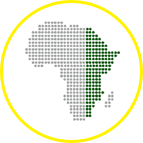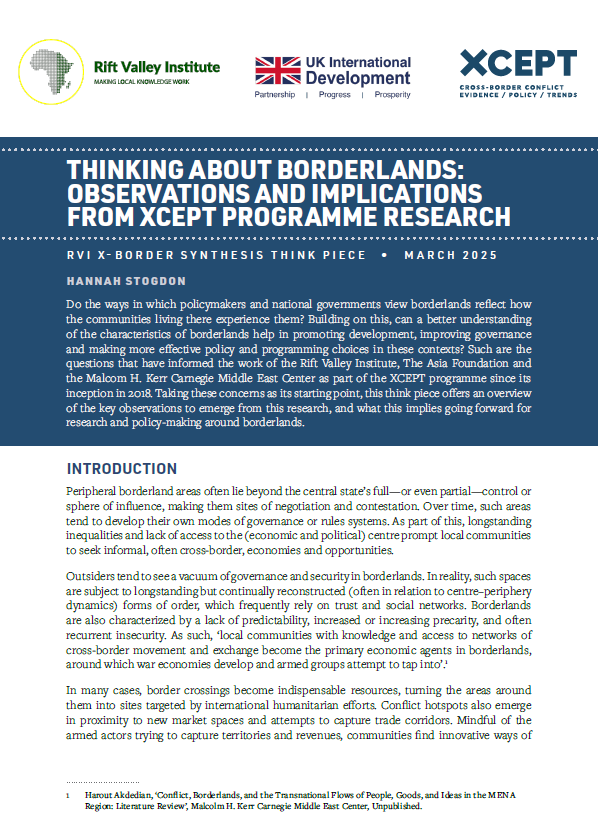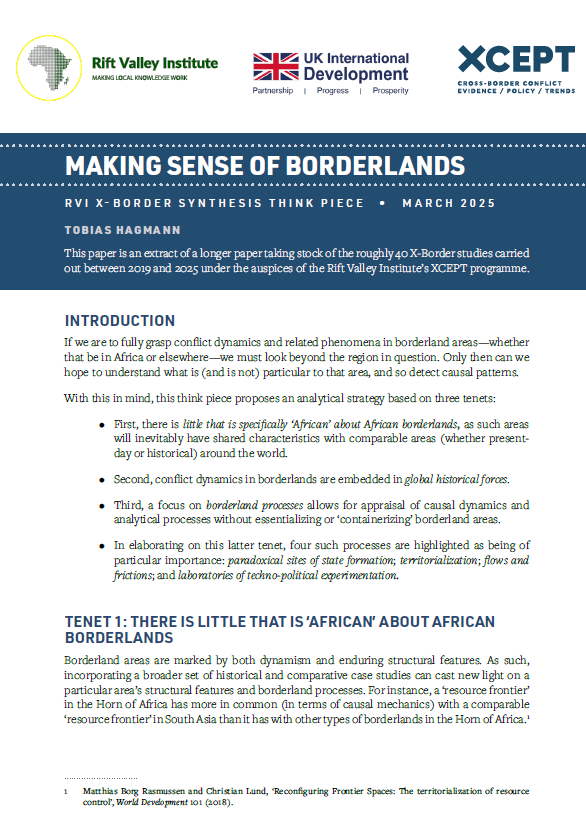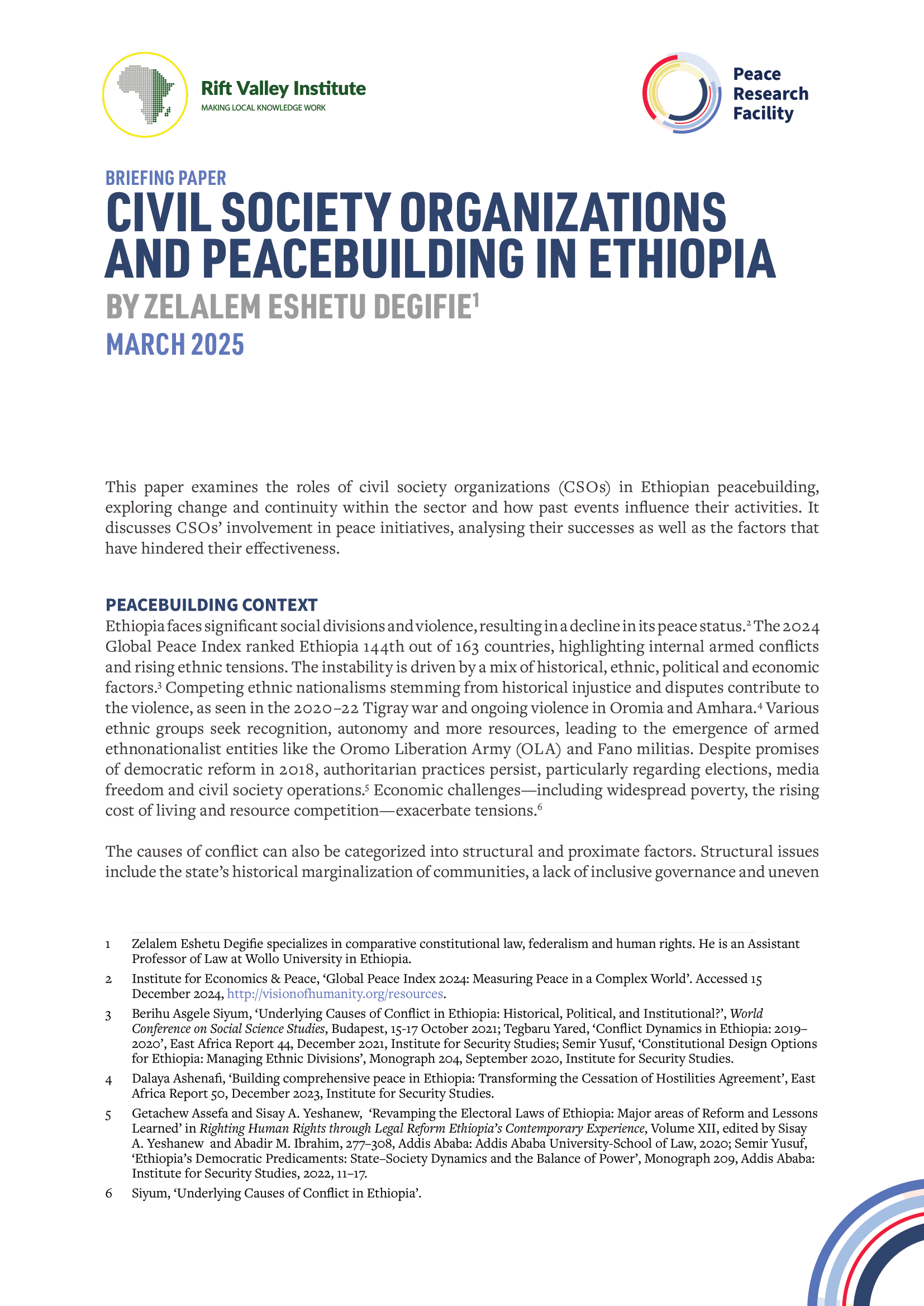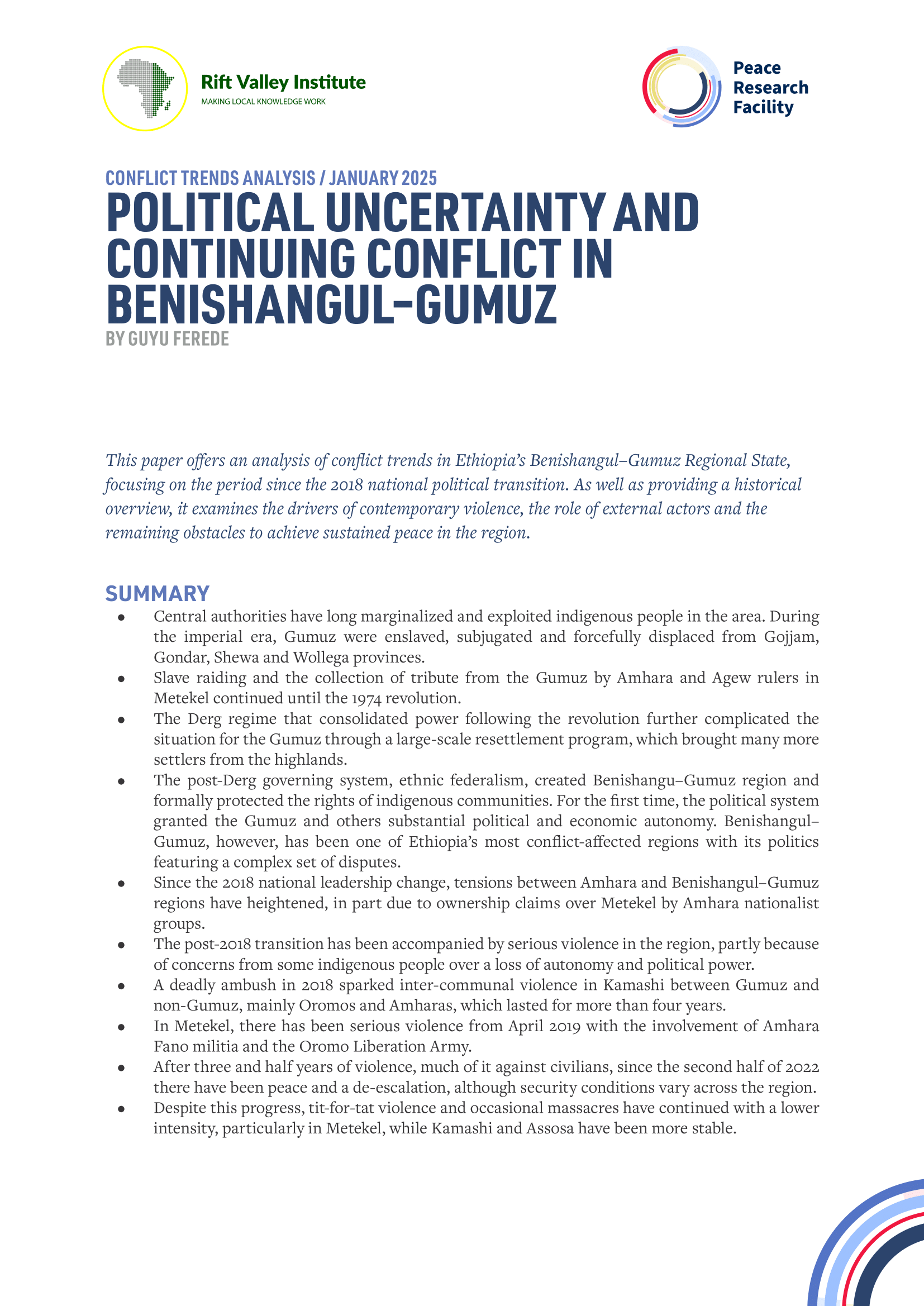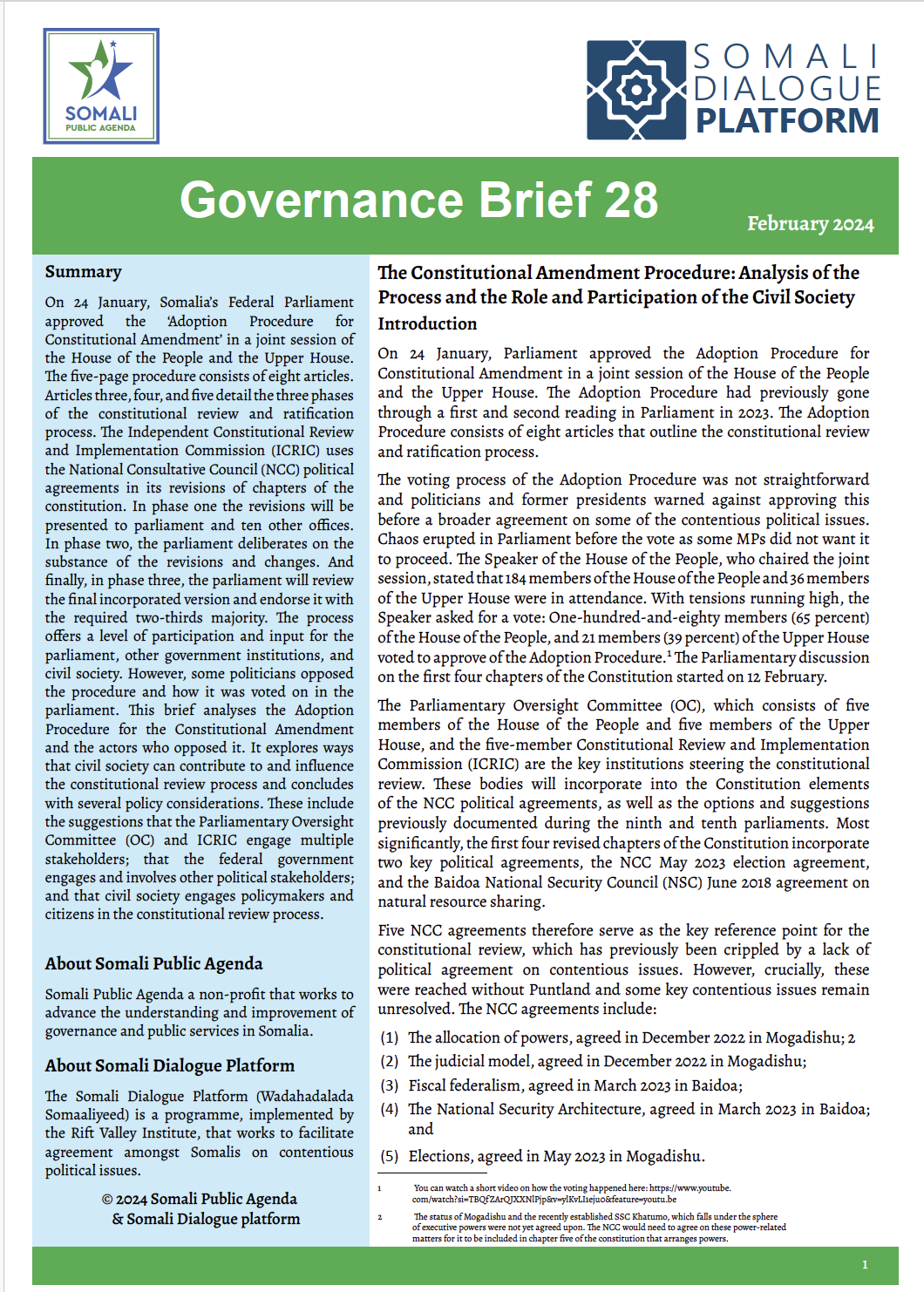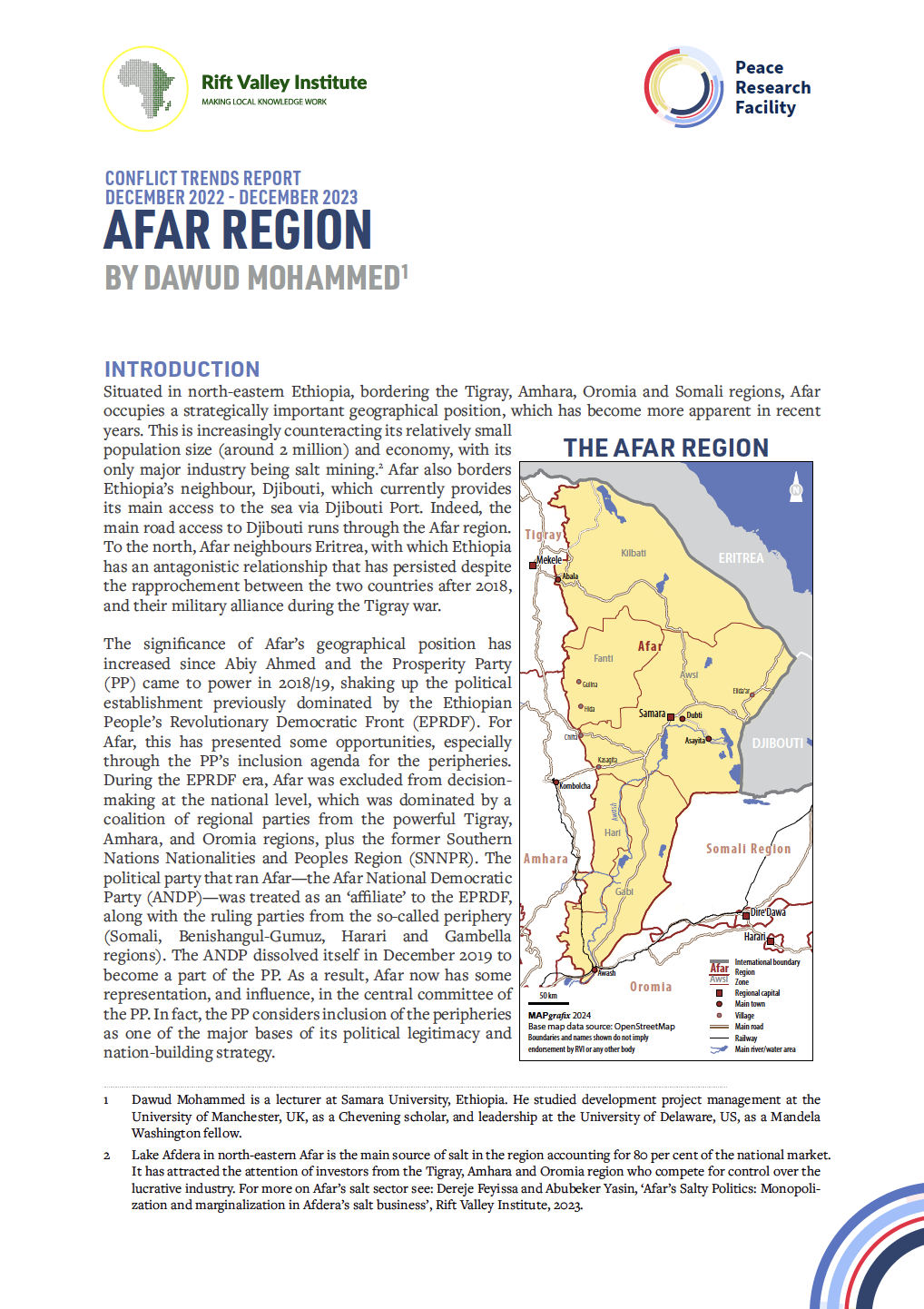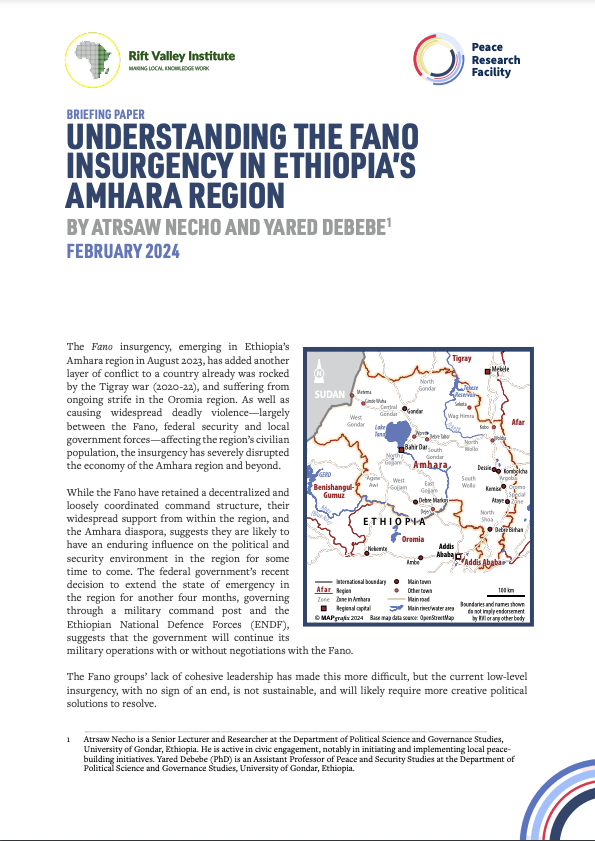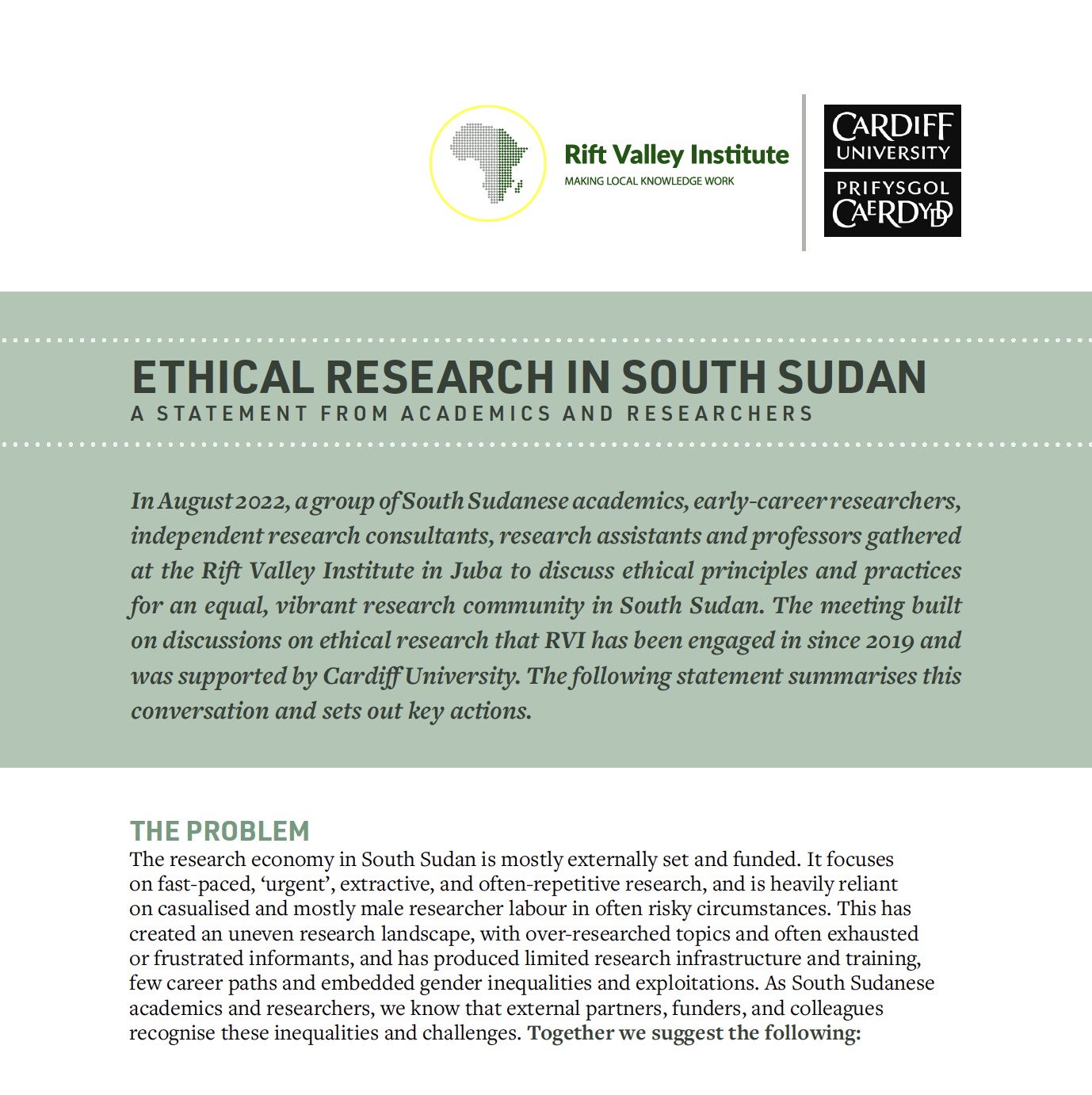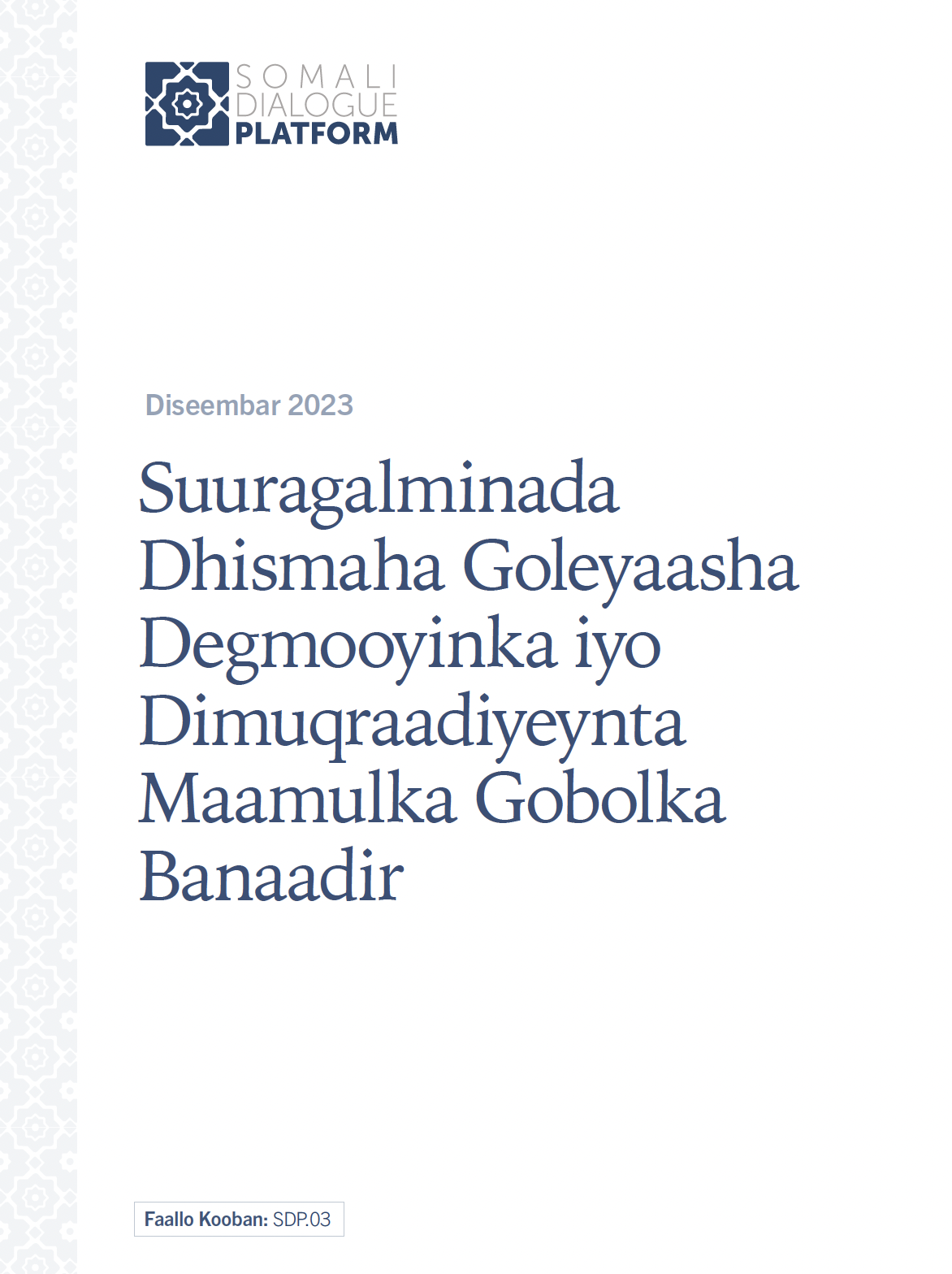Do the ways in which policymakers and national governments view borderlands reflect how the communities living there experience them? Building on this, can a better understanding of the characteristics of borderlands help in promoting development, improving governance and making…
RVI publishes books, research reports, research papers, briefings and meeting reports in a range of formats. Publications cover policy, research, arts, culture and local knowledge in the countries of eastern and central Africa. Research publications—books, reports and papers—are peer-reviewed. Some RVI publications are also available in French and/or Arabic.
The RVI is a signatory of the Budapest Open Access Initiative (2001); all publications are free for download in PDF format under Creative Commons licences. The views expressed in books and reports published by the RVI are those of the authors, not the Institute.
SEARCH
PUBLICATION TYPE
LANGUAGE
REGION
COUNTRY
This think piece is an extract of a longer paper taking stock of the roughly 40 X-Border studies carried out between 2019 and 2025 under the auspices of the Rift Valley Institute’s XCEPT programme. If we are to fully…
This paper examines the roles of civil society organizations (CSOs) in Ethiopian peacebuilding, exploring change and continuity within the sector and how past events influence their activities. It discusses CSOs’ involvement in peace initiatives, analysing their successes as well…
Since 2018, Gambella has experienced several conflicts. While some can be categorized as a continuation of protracted conflicts in the region, others can be attributed to the post-2018 political changes in Addis Ababa. The major conflicts include, Anywaa–Nuer conflict,…
This paper offers an analysis of conflict trends in Ethiopia’s Benishangul–Gumuz Regional State, focusing on the period since the 2018 national political transition. As well as providing a historical overview, it examines the drivers of contemporary violence, the role…
On 24 January, Somalia’s Federal Parliament approved the ‘Adoption Procedure for Constitutional Amendment’ in a joint session of the House of the People and the Upper House. The five-page procedure consists of eight articles. Articles three, four, and five…
INTRODUCTION Situated in north-eastern Ethiopia, bordering the Tigray, Amhara, Oromia and Somali regions, Afar occupies a strategically important geographical position, which has become more apparent in recent years. This is increasingly counteracting its relatively small population size (around 2…
The Fano insurgency, emerging in Ethiopia’s Amhara region in August 2023, has added another layer of conflict to a country already was rocked by the Tigray war (2020-22), and suffering from ongoing strife in the Oromia region. As well…
In August 2022, a group of South Sudanese academics, early-career researchers, independent research consultants, research assistants and professors gathered at the Rift Valley Institute in Juba to discuss ethical principles and practices for an equal, vibrant research community in…
Soo koobid Find the English version of this briefing here….
Recent Publications
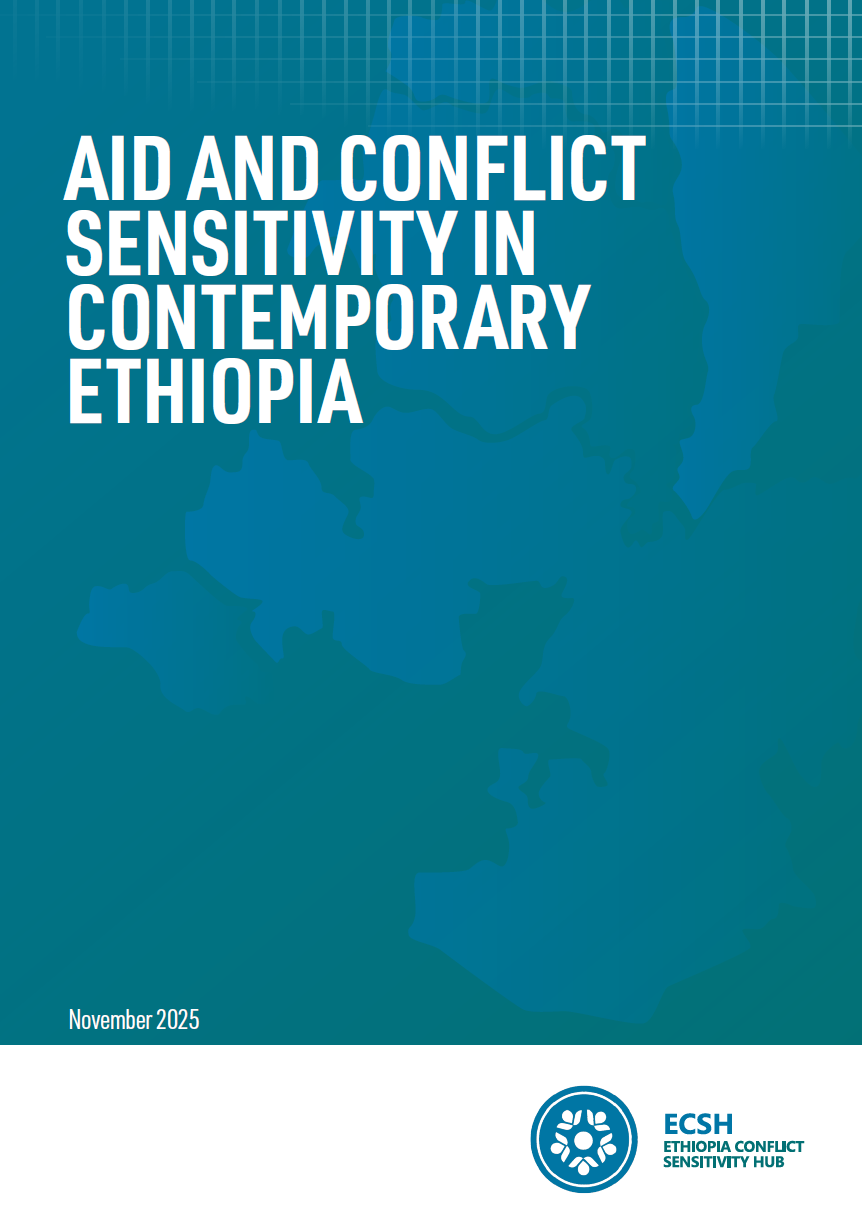
Aid and Conflict Sensitivity in Contemporary Ethiopia
November 17, 2025
This study assesses conflict sensitivity practices among humanitarian, development and peacebuilding (HDP) actors in Ethiopia. It seeks to raise awareness and foster a deeper understanding of the evolving aid landscape in the country while analysing the challenges that affect conflict-sensitive
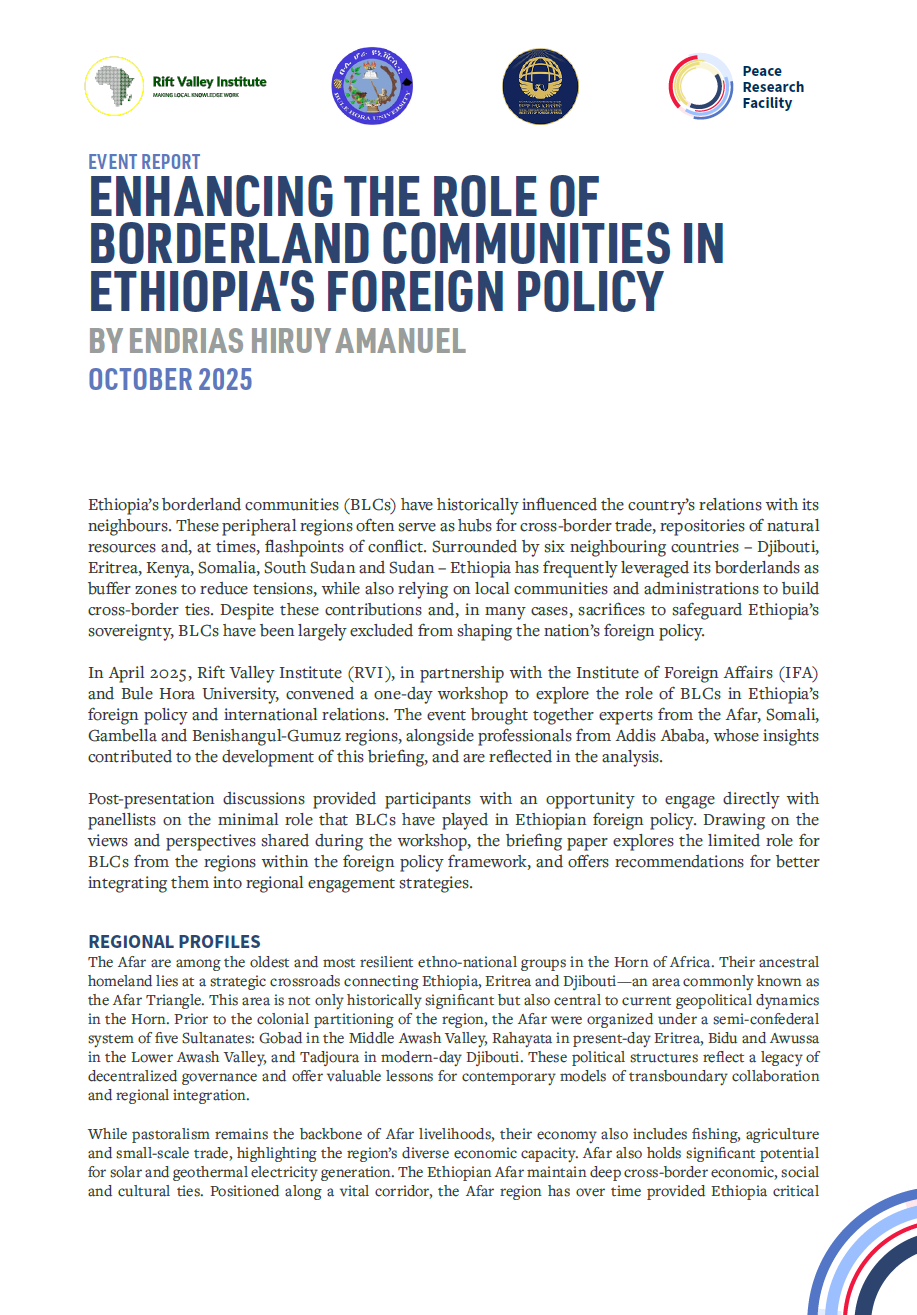
Enhancing the Role of Borderland Communities in Ethiopia’s Foreign Policy
October 15, 2025
Ethiopia’s borderland communities (BLCs) have historically influenced the country’s relations with its neighbours. These peripheral regions often serve as hubs for cross-border trade, repositories of natural resources and, at times, flashpoints of conflict. Surrounded by six neighbouring countries – Djibouti,
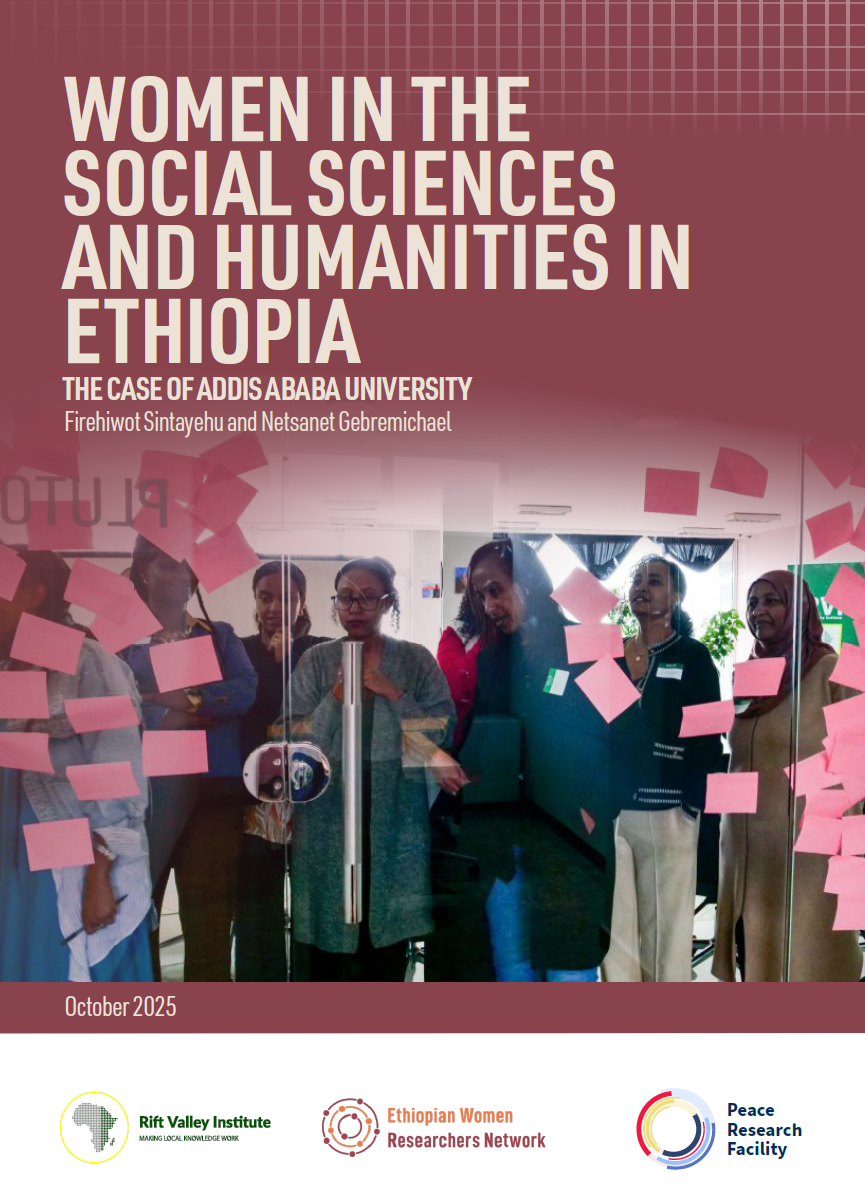
Women in the Social Sciences and Humanities in Ethiopia: The case of Addis Ababa University
October 10, 2025
This preliminary assessment is part of the launch exercise of the Ethiopian Women Researchers’ Network (EWNET). Focusing on Addis Ababa University as a pioneering higher institution in the country, the study looks into the status of women within these disciplines
